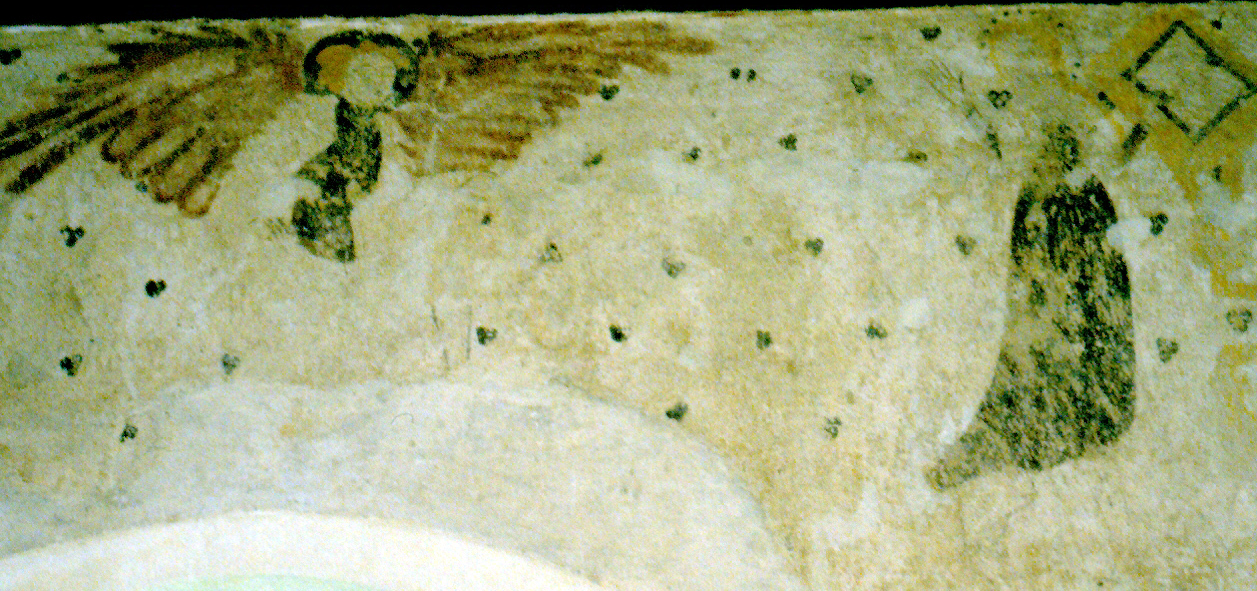Barnby, Suffolk (†St Edmundsbury & Ipswich) C.14?
The Annunciation

This small and very narrow church was built in the 13th century, and the wall paintings, several of which remain, were discovered only recently. This Annunciation is on the north wall, opposite the Seven Works of Mercy, and the Crucifixion, which includes the Two Thieves, an unusual detail in the English church, is now also here.
Gabriel, with very large and flamboyant wings, is at the left, and the whole subject is painted on a background ‘diapered’ with small rosettes. The Virgin at the right, separated from Gabriel by a sizeable empty space in the centre, has until this moment been reading at a lectern or prie-dieu.
Not much is left of her head, but her halo, just below the top edge of the painting, appears now as an incomplete circle of dots, as if edged with tiny pearls, which was probably the effect originally aimed at. It is not easy to see here, but she has begun to turn away, towards Gabriel, and her right hand is raised in enquiry while her left hand remains on the lectern – itself now reduced to a yellowish rectangle – keeping her place in the grey-outlined book. This is the first stage in the ‘Angelic Colloquy’ – Disquiet or Conturbatio on the Virgin’s part:
‘when the Virgin heard the Angel’s salutation…she was troubled. This disquiet…came not from incredulity but from wonder, since she was used to seeing angels and marvelled not at the fact of the Angel’s apparition so much as at the lofty and grand salutation, in which the Angel made plain for her such great and marvellous things…’
As codified in the fifteenth century by popular preachers such as Fra Roberto Caracciolo da Lecce¹, quoted above. It is unlikely that the Barnby painter would have analysed his work in Fra Roberto’s way, but he isolated the moment and produced the prescribed effect nevertheless, and a reading Virgin is now fairly rare in this kind of painting.
The Barnby painter’s graphic talent was limited; and his work would no doubt have readily drawn the epithet ‘quaint’ from a Victorian. But an imaginative understanding of the stories he is painting is certainly not lacking here.
¹Quoted in M.Baxendall, Painting & Experience in Fifteenth-Century Italy, 2nd. edition, OUP, 1988, p.51